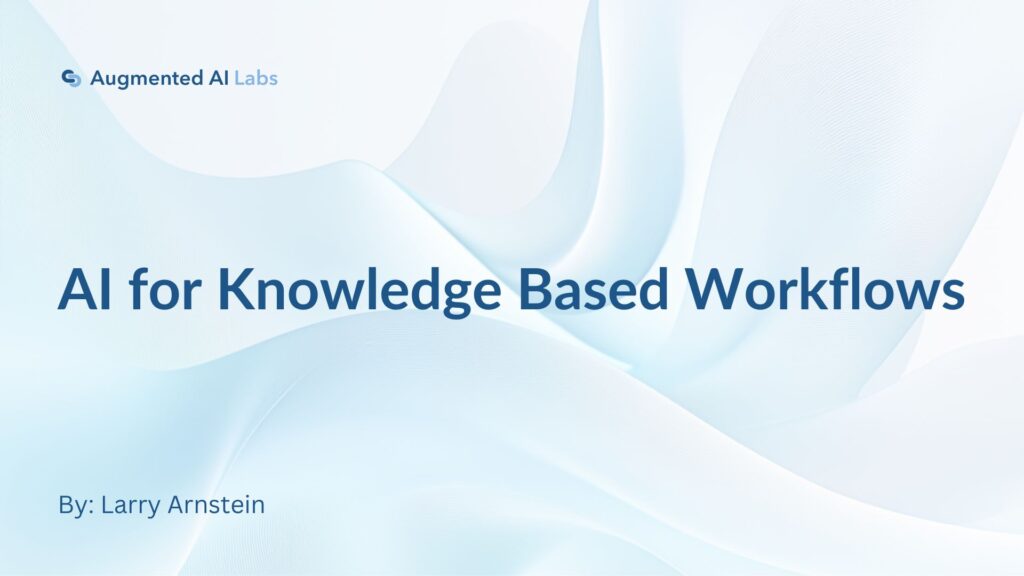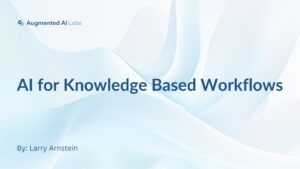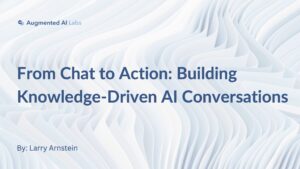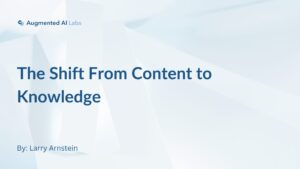The Problem with Knowledge Access and Use
Companies thrive when they can effectively leverage all of their knowledge and expertise. Yet critical intelligence often remains trapped in complex documents or exists only in the minds of a few key employees.
In all of these cases, the problem isn’t lack of knowledge – it’s finding and using it in workflows that that drives business outcomes across the organization.
-
Just one or two attorneys in a large firm might have enough knowledge of a specific set of complex agreements to advise the firm’s client. If those people are not available, it may take hours to answer what seems to the client like a simple question.
-
A few specialists in an engineering services firm might know enough about prior projects to accurately respond to an RFP. And, even their success depends on quickly finding similar past work to estimate costs and timelines. A search process that relies on memory and luck results in lost business or low margins.
-
In sales and marketing, the best way to respond to a prospect’s questions or objections might be locked up in the heads of just a few leaders.
How AI Changes the Game
Generative AI can unleash a firm’s hard won trove of knowledge and experience to expand the scope of what their professional staff can do. By developing solutions for clients at Augmented AI Labs we have identified a new class of AI-powered business applications that makes domain experts more effective and more powerful. Our solutions for knowledge-based workflows share the following elements:
-
Intelligent decomposition
-
Conventional and AI search
-
Collection management
Intelligent Decomposition
The key to building a usable knowledge base is to be thoughtful about how to decompose unstructured sources for AI searchability. We break down unstructured documents into discrete, searchable elements that make sense for the specific domain while preserving context and relationships. Random “chunking” is not the answer. For example, we might treat each sheet in a large set of technical drawings as a discrete knowledge element yet we may require other cross-referenced drawings from the original set for a complete understanding. Similarly, each clause in a large body of legal documents can be treated as a knowledge element, even if they are not fully understandable outside of their hierarchical context.
Conventional and AI Search
Once we have decided the best way to decompose information sources into knowledge elements, we then build a database of those elements for searchability and composability. That database includes fields like date of creation, project or client name, position in the original original source document, cross references, and any other metadata that is either available or which can be extracted using AI. We then use AI to improve searchability in several ways.
Depending on the type of knowledge, we may use AI to generate and store plain english descriptions or summaries, or apply tags from a pre-defined library. This allows the user to search in more than one way – conventionally with key words, metadata filters and hierarchy, or with AI using images or natural language to find similar or related elements in the knowledge base. Imagine being able to take a screenshot of a just part of a large drawing then, with one click, find the small handful of drawings, among millions, that include something like it.
A feature that we find particularly useful is the “pivot”. In a knowledge base with millions of elements, the first AI search might only get close. The pivot feature allows users to perform AI-search for items that are similar to the results of an earlier search, allowing the user to quickly home in on just the right thing. While search is fundamental to knowledge workflows, it is not the end result.
Collection Management
In all the knowledge workflow solutions we have built, we empower users to draw from a large knowledge base to build up collections of knowledge elements as they go. Those collections are then used to complete the workflow, often further leveraging AI. It may take more than one search to find the right set of knowledge elements, so we often provide ways for users to save, manage and share collections of these elements organized as projects or programs.
In one case, our client’s goal is to generate a bill of materials from collections of technical drawings for bidding on RFPs. At any given time, a member of the bidding team might be working on several bids with different collections of drawings from prior work. These collections can be built up collaboratively, then with a click, can be exported as a spreadsheet for costing.
In another example, a financial services firm uses our Known Good Answer Manager (KGAM) to curate a knowledge base of Known Good Answers (KGAs) for client-facing chat. But they also maintain collections of KGAs on various topics to drive content generation. Similarly, we have built a solution that allows lawyers to maintain collections of clauses that pertain to specific client matters, then export those clauses complete with all hierarchical context into a cross-section document that fully addresses the matter. And, with a click, they can get an AI-generated summary based solely on the content of the curated cross-section document for review and refinement.
In all of these cases, we are using Generative AI to empower domain experts and specialists to have quick and easy access to the knowledge they need to get the job done, not to do the job for them.
Conclusion and Looking Forward
We believe we have landed on a powerful approach for leveraging Generative AI to empower experts and professionals – this is true augmentation. We have applied the design principles outlined above to commercial solutions in engineering services, architecture, sales and marketing, and law. With intelligent decomposition, powerful AI search, and collection management, our domain expert users can get more done in less time with better results.
If this kind of solution could work for your team, please contact us to see a demo with your own data.
About Larry Arnstein
Larry brings broad technical and business experience to Augmented AI Labs. Larry joined the Augmented AI Labs team after a long entrepreneurial career that included helping lead Impinj to IPO in 2016 as a member of the executive leadership team, followed by the acquisition of Xnor.ai by Apple in 2019 where he was head of market and product strategy. Larry then left Apple to become the CTO and co-founder of AirTerra, a retail supply chain solution provider that was acquired by American Eagle Outfitters in 2021.
About Augmented AI Labs
Augmented AI Labs is a leading provider of AI-driven workflow solutions aimed at enabling businesses to optimize the key operational aspects that bring value to their clients. With Augmented AI Labs, you get more than just an AI service provider; you get a partner committed to your business’s success. We strive to make AI accessible, understandable, and beneficial for all businesses, regardless of size or industry.
Our AI development team is ready to help your business at every step. We’ll guide you from planning to launch, and from training to support. Whether it’s integrating process automation or conversational AI, you can think of us as a dedicated AI partner.







